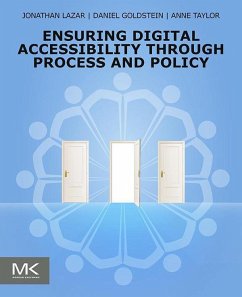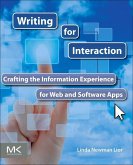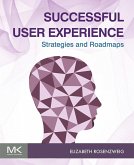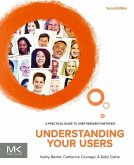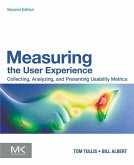This combination of skills from the three authors-law, technical, and research, with experience in both corporate, government, and educational settings, is unique to this book, and does not exist in any other book about any aspect of IT accessibility. The authors' combination of skills marks a unique and valuable perspective, and provides insider knowledge on current best practices, corporate policies, and technical instructions. Together, we can ensure that the world of digital information is open to all users.
- Learn about the societal and organizational benefits of making information technology accessible for people with disabilities
- Understand the interface guidelines, accessibility evaluation methods, and compliance monitoring techniques, needed to ensure accessible content and technology
- Understand the various laws and regulations that require accessible technology
- Learn from case studies of organizations that are successfully implementing accessibility in their technologies and digital content
Dieser Download kann aus rechtlichen Gründen nur mit Rechnungsadresse in A, B, BG, CY, CZ, D, DK, EW, E, FIN, F, GR, HR, H, IRL, I, LT, L, LR, M, NL, PL, P, R, S, SLO, SK ausgeliefert werden.
"Information technology has enormous potential to make our society more inclusive. Realizing that potential takes a lot of hard work, not just on the technology itself, but also on the legal and policy framework within which it operates. This book lets us learn from those who have been doing that work, a rare opportunity!" --Clayton Lewis, Professor of Computer Science and Fellow of the Institute of Cognitive Science, University of Colorado, Boulder
"Ensuring Digital Accessibility is a comprehensive yet easy to follow guide to a fast-moving area of the law. It will be of great use to lawyers, software and web developers, CIOs, and policymakers." --Michael Waterstone, J. Howard Ziemann Fellow and Professor of Law, Loyola University Law School
"This book is a must read for anyone interested in understanding what it means for technology to be fully accessible to individuals with disabilities. The book will be invaluable to a broad audience because it is chock full of technical and legal resources but describes those resources in a way that is understandable to a lay audience. I will rely heavily on this book when I next update my teaching materials in the field of disability discrimination and look forward to its publication." --Ruth Colker, Distinguished University Professor and Heck-Faust Memorial Chair in Constitutional Law, Ohio State University
"Ensuring Digital Accessibility is a wonderful explanation of why accessibility to all kinds of technology including computers, smartphones, e-books, and web sites, is so beneficial to society. Certainly the recipients of access benefit, but so do the providers of the information by reaching a wider and more diverse audience. Providing access to users with disabilities is not only the right thing to do, it is the smart thing to do." --Richard E. Ladner, Professor, Department of Computer Science and Engineering, University of Washington
"The authors of this book represent a team that can take a unique perspective on digital accessibility. Dr. Lazar is one of the few academics I know who has taken the time to write multiple books that take academic knowledge about accessibility and organize it into clear and accessible guidelines for the design of digital artifacts. Dan Goldstein is a civil rights lawyer with on the ground experience about what it takes to enforce and create accessibility standards thanks to his leadership in multiple successful lawsuits. Anne Taylor has hands on experience guiding others in the design and use of accessible technologies. Together they are sure to present a practical and grounded perspective on what it takes to ensure digital accessibility." --Jennifer Mankoff, Associate Professor, Human Computer Interaction Institute, Carnegie Mellon University
"...an excellent work by two IT experts and one legal expert...an outstanding book for readers who are interested in the fundamentals of accessibility in the digital world. It is a badly needed book for the general audience." --Computing Reviews

